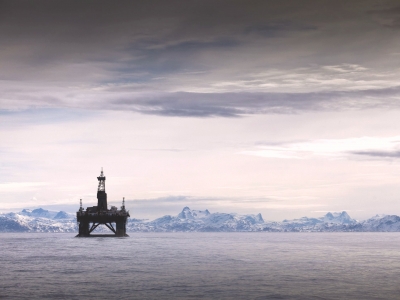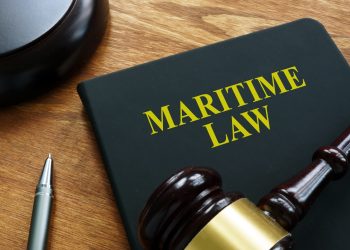Shell shouldn’t have been issued an oil drilling permit
Royal Dutch Shell Oil may have gotten the Obama administration to approve the most aggressive Arctic drilling proposal in US history, but not without a challenge. A coalition of native and conservation groups filed suit against the Bureau of Ocean Energy Management, Regulation, and Enforcement’s (BOEMRE) over its decision to allow offshore oil drilling in Arctic’s Beaufort Sea.
In granting the permit, BOEMRE said it “found no evidence that the proposed action would significantly affect the quality of the human environment.”
Yet, U.S. Coast Guard officials have repeatedly explained the resources to clean up an oil spill in the Arctic Ocean simply don’t exist. This summer, Commandant Admiral Robert Papp told Congress the federal government has “zero” spill response capability in the Arctic.”
The lawsuit filed against the Obama administration argues Shell shouldn’t have been issued an oil drilling permit in the Arctic’s Beaufort Sea without having a credible cleanup plan in the event of an oil spill.
“The holes in Shell’s plan, notably the lack of a workable oil spill response plan, leave the fragile natural systems of the Arctic and the livelihoods of native communities at risk. Smarter transportation choices, not dangerous drilling plans, are what we should be pushing forward,” says Dan Ritzman, Sierra Club Alaska Program Director.
After a brief delay following BP’s mega-spill in the Gulf, the plaintiffs are aghast that the Obama administration is acting as if the nation’s worst environment catastrophe never happened.
“….Shame on the Obama administration for allowing politics to trump science by approving such an unrealistic plan to drill in the Beaufort Sea,” says Cindy Shogan, Executive Director, Alaska Wilderness League.
Shell still needs several other approvals and permits before drilling begins, which could be as early as the summer of 2012.
Earthjustice, initiated litigation in the Ninth Circuit Court of Appeals on behalf of the Native Village of Point Hope, Alaska Wilderness League, Center for Biological Diversity, Defenders of Wildlife, Greenpeace, National Audubon Society, Natural Resources Defense Council, Northern Alaska Environmental Center, Oceana, Pacific Environment, REDOIL, Sierra Club, and The Wilderness Society.
In contrast , as we reported earlier this week, after a very minor oil spill compared to BP’s Gulf spill, China’s response was much different. After ConocoPhillips spilled crude oil into Bohai Bay, oil companies have been put on notice that China is enacting tough “zero-risk” standards.
ConocoPhillips was forced to apologize and create two funds to clean up the oil and to compensate for damages.
The government ordered safety checks on all offshore oil activity by the end of this year, and approval of environmental impact plans for new wells has nearly stopped. As a result of the stricter environmental standards, China estimates domestic crude oil production – which has been growing by about 7% a year – will drop by half this year, to 50 thousand barrels per day.
Shell’s Plan
Shell’s exploration plan estimates a worst-case scenario blowout would release 400,000 barrels of oil into the Beaufort Sea, and that it could recapture 90% of the oil.
Based on what happened in the Gulf spill – where 5 million gallons were released and where BP clearly didn’t have a clue for how to stop the gushing much less clean it up (oil still seeps onto beaches and into wetlands to this day), Earthjustice attorney Holly Harris calls Shell’s cleanup plan “unrealistic, insulting and irresponsible.”
Last year, after months of unrelenting oil surging into the Gulf, BP and its partners recovered only 5% of the of the oil. The Exxon Valdez oil spill in 1989 fared only marginally better, recovering 8% of the hundreds of thousands of barrels spilled.
And there was even an oil spill in the Beaufort Sea 10 years ago, where mechanical cleanup in icy conditions was described as a “failure.” As was continuously pointed out during the Gulf spill, oil companies have not developed any new technology to clean up spills – they still rely on simple containment booms, toxic dispersants and oil burning.
A recent report to the Canadian government concludes cleanup would be impossible 44-84% of the time during the short summer drilling season and completely impossible the other 7-8 months of the year.
In addition to the usual problems handling a major spill, Alaska has huge ocean waves, gale force winds and widespread sea ice.
“Any oil company that wants to drill in the Arctic Ocean must demonstrate an ability to clean up oil spilled in these icy waters with proven technology,” says Cindy Shogan, Executive Director, Alaska Wilderness League. “Shell’s current oil spill plan is full of inadequacies and falsehoods.”
“Given the risk of a catastrophic oil spill, the Obama administration should not allow Shell to play Russian roulette with the future of polar bears, Pacific walrus and the entire Arctic ecosystem,” says Rebecca Noblin, Alaska Director for Center for Biological Diversity. “If polar bears, walrus and other imperiled species are going to survive in a rapidly-melting Arctic, we need to protect their critical habitat, not sacrifice it to oil companies.”
Source: Sustainable Business
































































